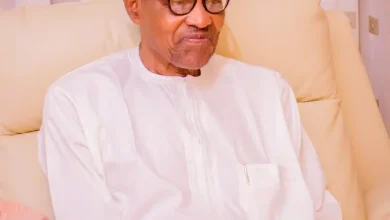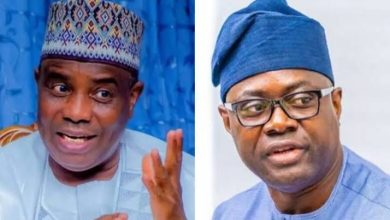Things To Know About Nnamdi Kanu’s Rearrest

Nnamdi Kanu, the leader of the Indigenous People of Biafra (IPOB), was presented before the Federal High Court in Abuja on Tuesday.
“Self-acclaimed leader of the proscribed secessionist Indigenous People of Biafra (IPOB), Nnamdi Kanu, has been intercepted via the coordinated efforts of Nigerian intelligence and security services,” Attorney General and Minister of Justice Abubakar Malami announced.
Here are nine facts about Nnamdi Kanu’s detention.
1. Kanu went into hiding in 2017 after an alleged military invasion of his home, months after being granted bail while facing a treasonous felony charge. The federal authorities labeled him sought after that.
2. Malami said he was re-arrested on Sunday, July 27. There are no details on where he was re-arrested.
3. Following an application by the federal government’s lawyer, Shuaibu Labaran, Kanu was brought before Justice Binta Nyako of the Abuja Division of the Federal High Court on Tuesday, who ordered his remand in the custody of the Department of State Services (DSS).
Exposed!! Popular Abuja doctor revealed how men can naturally and permanently cure poor erection, quick ejaculation, small and shameful manhood without side effects. Even if you are hypertensive or diabetic . Stop the use of hard drugs for sex!! It kills!
4. Kanu attributed his absence from court to a security operatives’ invasion of his home, for which he claimed he had to go underground to avoid being killed.
5. His trial has been rescheduled for July 26.
6. After disappearing while on bail for an 11-count charge against him, he was re-arrested and brought back to Nigeria to face trial.
7. He was advised to contact his lawyers to find out what had happened in the case while he was away.
8. After jumping bail, he was accused of engaging in subversive activities such as inciting violence against Nigeria and Nigerian State and Institutions via television, radio, and online broadcasts.
9. Kanu was also accused of instigating violence, particularly in the South East, which resulted in the deaths and destruction of civilians, military, paramilitary, and police forces, as well as civil institutions and government symbols.




